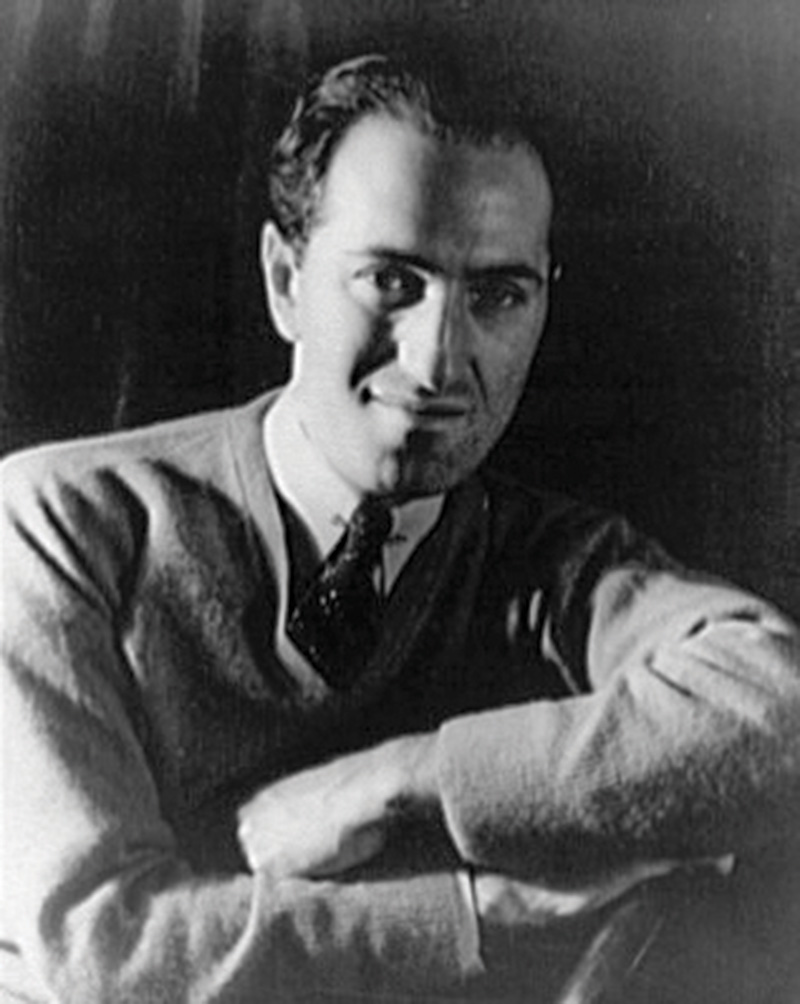George Gershwin

- Born: September 26, 1898, Brooklyn, New York
- Died: July 11, 1937, Los Angeles, CA
Rhapsody No. 2 for Piano and Orchestra
- Composed: 1931
- Premiere: January 29, 1932 in Boston, with the composer as soloist, Sergei Koussevitzky conducting
- Instrumentation: solo piano, 3 flutes (incl. piccolo), 2 oboes, English horn, 2 clarinets, bass clarinet, 2 bassoons, 4 horns, 3 trumpets, 3 trombones, tuba, timpani, drum set, glockenspiel, crash cymbals, xylophone, strings
- CSO notable performances: First Performance: These are the first CSO performances of the work, but the Cincinnati Pops performed the work twice in 1992, first at Sawyer Point with Erich Kunzel conducting and Michael Chertock, pianist, and then at Music Hall with Erich Kunzel conducting and Stewart Goodyear, pianist. Other: Erich Kunzel and the Cincinnati Pops, with pianist Stewart Goodyear, recorded the work for their 1993 American Piano Classics CD.
- Duration: approx. 16 minutes
It was in 1927 that feature films learned to speak, and a flurry of activity followed in the ensuing months to import to Hollywood the creative talent needed to give them something to say—and sing. George and Ira Gershwin signed a contract with Fox Studios in April 1930 to provide music for a film titled Delicious, starring Janet Gaynor and Charles Farrell, but had to delay their departure from New York until Girl Crazy was premiered on October 14. They left for California on November 5, arrived in Beverly Hills a week later, and moved into a two-story Spanish-style house at 1027 Chevy Chase Drive that had once given temporary shelter to Greta Garbo. (“I’m sleeping in the bed that she used,” George confided, “and it hasn’t helped my sleep any.”) Gershwin thoroughly enjoyed wintering in California. He took daily hikes up Franklin Canyon, swam, played tennis and golf (he liked to brag about the 86 he shot at Palm Springs one weekend), took side trips to Mexico, and was so in demand socially that he had to disconnect the phone in order to work. His music was much performed during his visit, including the local premiere of the Rhapsody in Blue by Artur Rodzinski and the Los Angeles Philharmonic.
For Delicious, the Gershwins wrote six songs, none of them among their best known, and George provided a background instrumental sequence for one scene in which he tried to capture the bustling activity of the streets of New York. Only one minute of the original six-minute sequence ended up in the movie, but George felt the piece deserved another life and decided to expand it into a full concert work—“Rhapsody in Rivets,” he called it at first. The score was largely sketched before he left Los Angeles on February 2, 1931: “I wrote it mainly because I wanted to write a serious composition, and found the opportunity in California to do so. Nearly everybody comes back from California with a western tan and a pocketful of moving-picture money. [George got $70,000 for Delicious; Ira, $30,000.] I decided to come back with both of those things, and a serious composition. I was under no obligation from Fox to do this. But, you know, the old artistic soul must every so often be appeased.” The “Rhapsody in Rivets,” orchestrated in New York between March 14 and May 23, became tentatively the “Manhattan Rhapsody” and then the “New York Rhapsody” before it was finally titled, simply, Second Rhapsody for Piano and Orchestra. On June 26, Gershwin hired an orchestra of 55 players to give a private trial performance of the new piece at a studio of the National Broadcasting Company so that he could judge its effect. The studio was linked by wire to the recording facility at Camden, and NBC transcribed the session there so that the composer could have a reference recording of the Second Rhapsody. “I was more than pleased with the result,” he wrote to a friend after listening to the recording. “In many respects, such as orchestration and form, it is the best thing I’ve written.”
Gershwin gave the premiere of the Second Rhapsody in Boston with Koussevitzky on January 29, 1932. He chose to delay the initial performance several months not only to finish work on Of Thee I Sing but also against the hope that the new Rhapsody might be given by Toscanini, who had expressed some interest in Gershwin’s music when the two first met in the spring of 1931. Nothing came of the plan (perhaps thankfully: when Toscanini finally got around to conducting some Gershwin—the Rhapsody in Blue in 1942—Virgil Thomson reported to readers of the New York Herald Tribune that “it all came off like a ton of bricks”), and the honor of the premiere went to Koussevitzky. Composer–pianist and conductor took the work on a short tour, which finished with the Rhapsody’s New York premiere on February 5, 1932. The work received praise when it was first heard, but it did not create the sensation that had accompanied the Rhapsody in Blue eight years before. “The Second Rhapsody is notable progress over the Rhapsody in Blue in organic unity, compactness of form, and adroitness of thematic growth,” wrote David Ewen in his 1956 study of the composer. “If the Rhapsody in Blue remains the more popular work, however, it is because the basic material is more inspired.” The score was published immediately in an edition for two pianos, but the orchestral version did not appear until 1953, and even then only in an arrangement by the composer Robert McBride rather than in Gershwin’s original. In 1982, orchestral parts were extracted from the composer’s manuscript in the Library of Congress, and the restored version of the Second Rhapsody has since become a welcome addition to the repertory of Gershwin’s concert works.
—Dr. Richard E. Rodda